
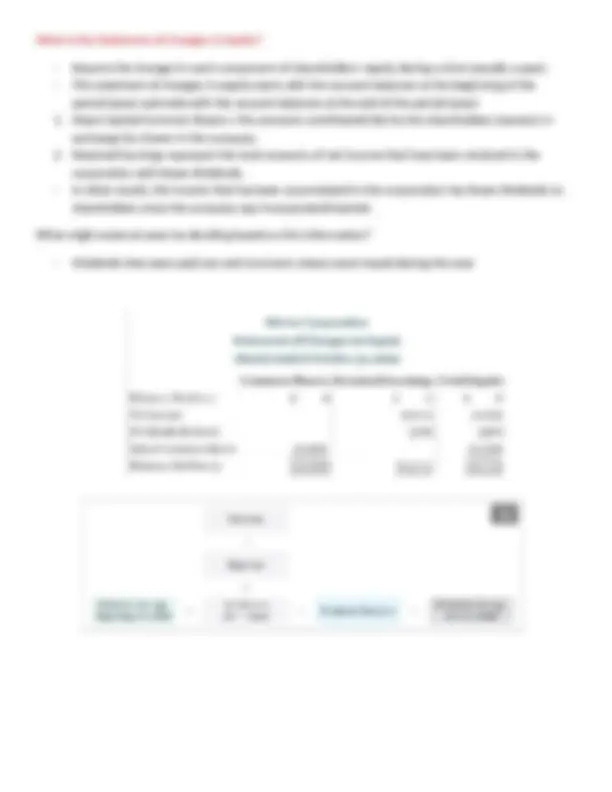
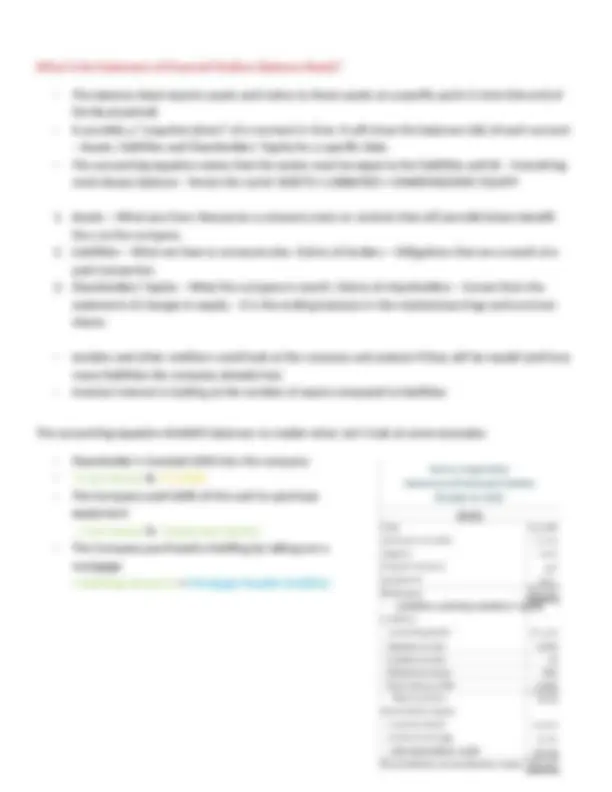
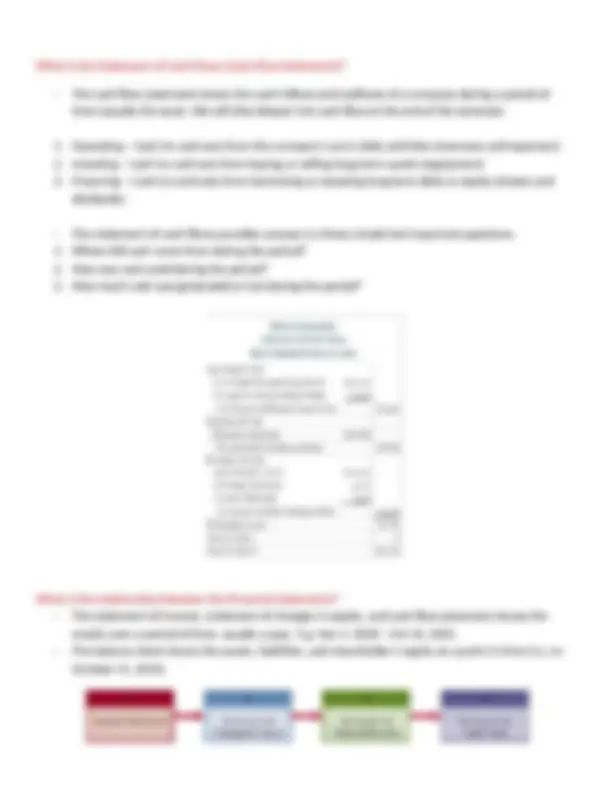
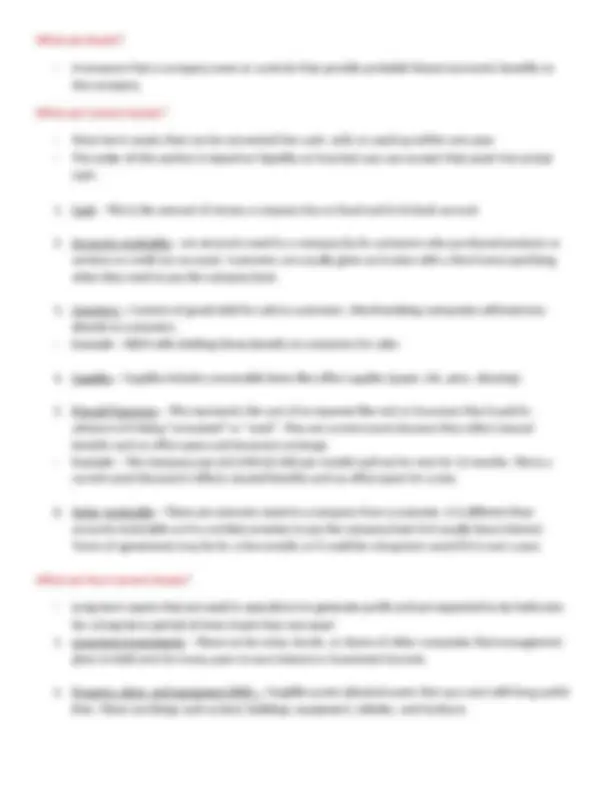
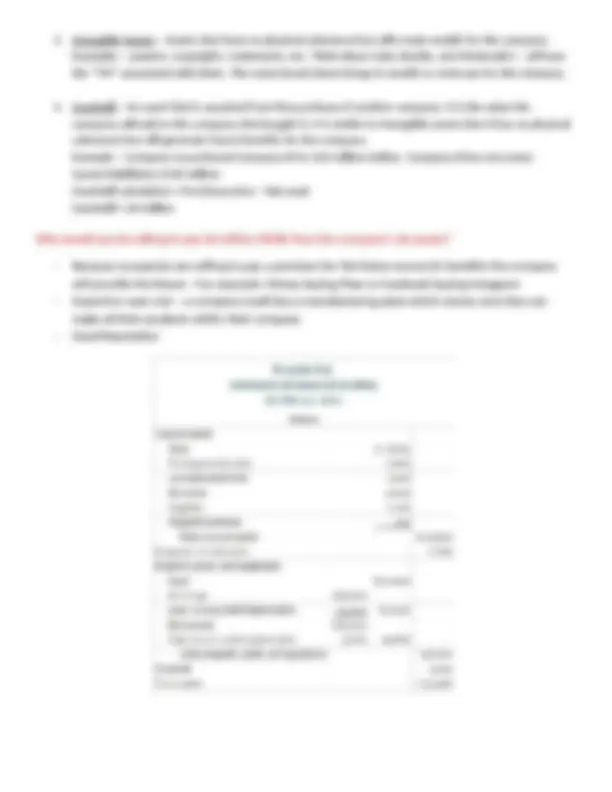
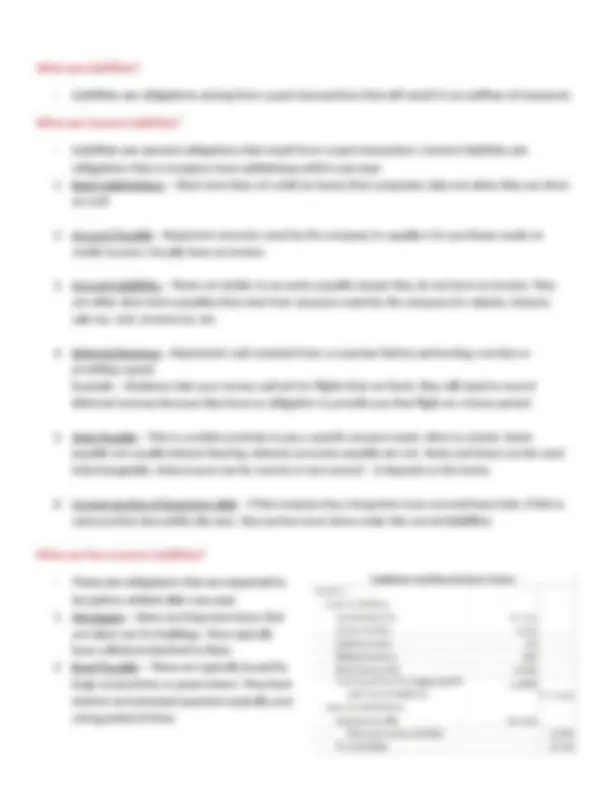
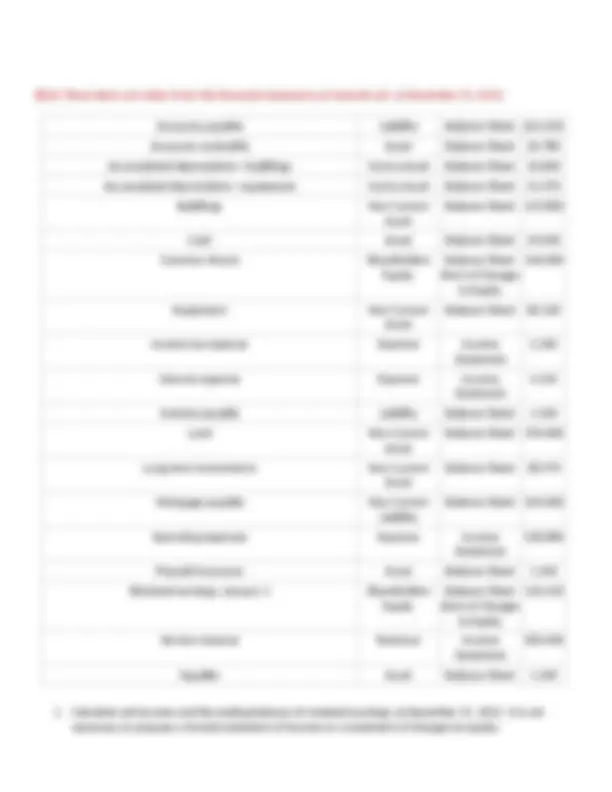
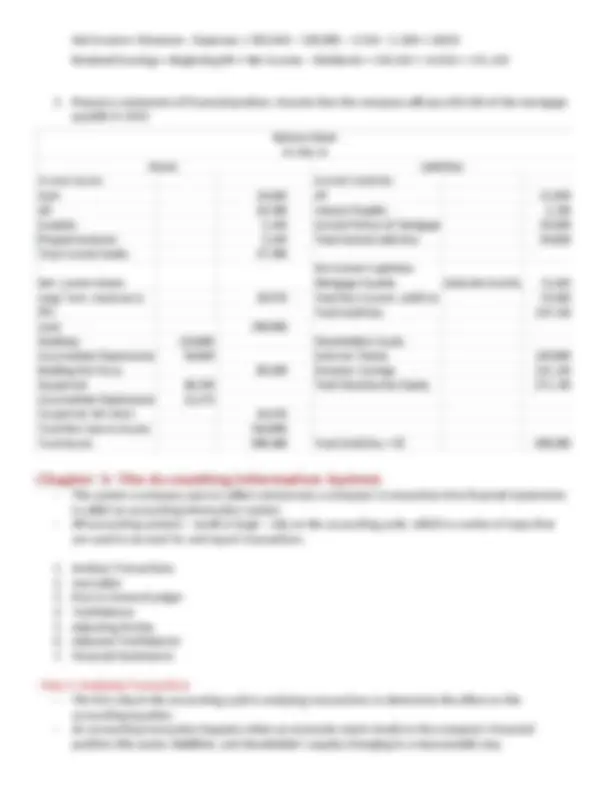
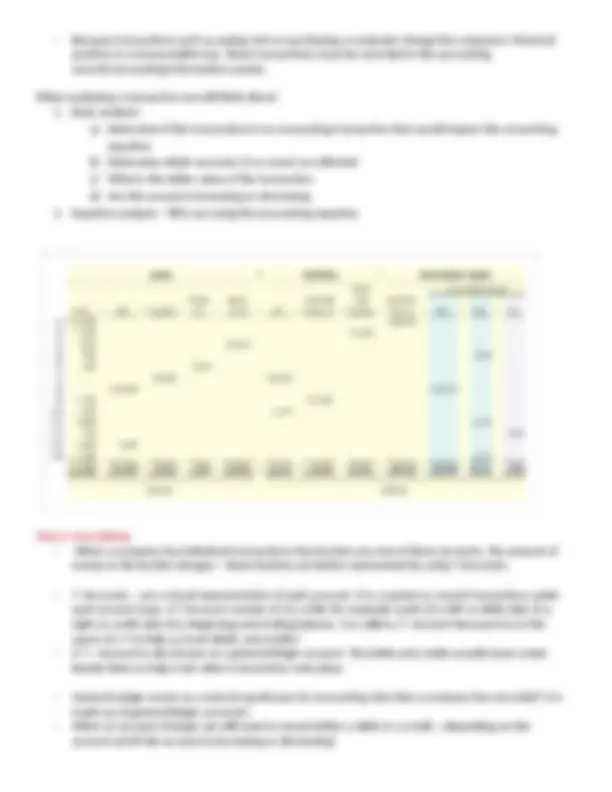
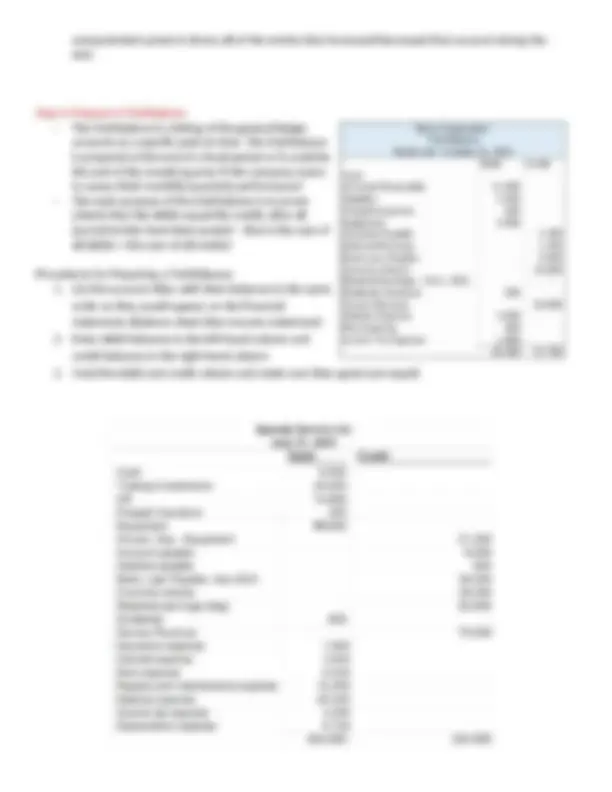
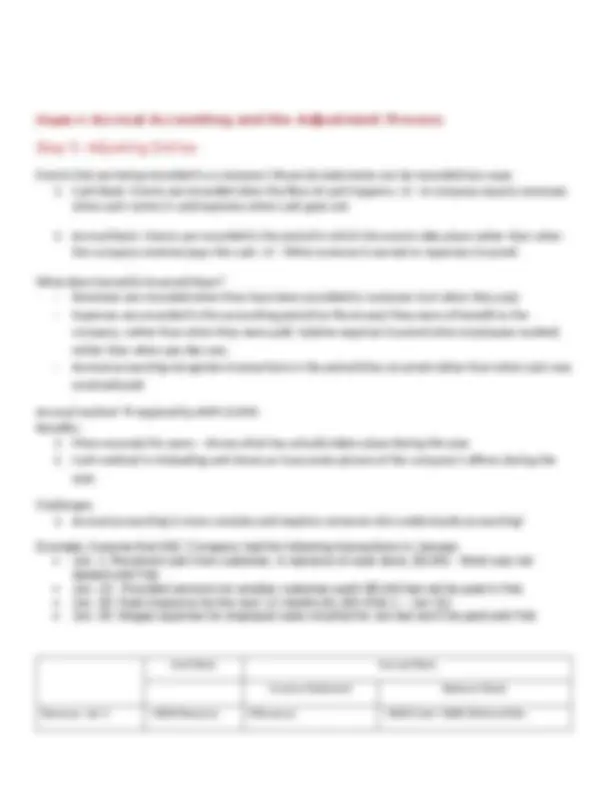
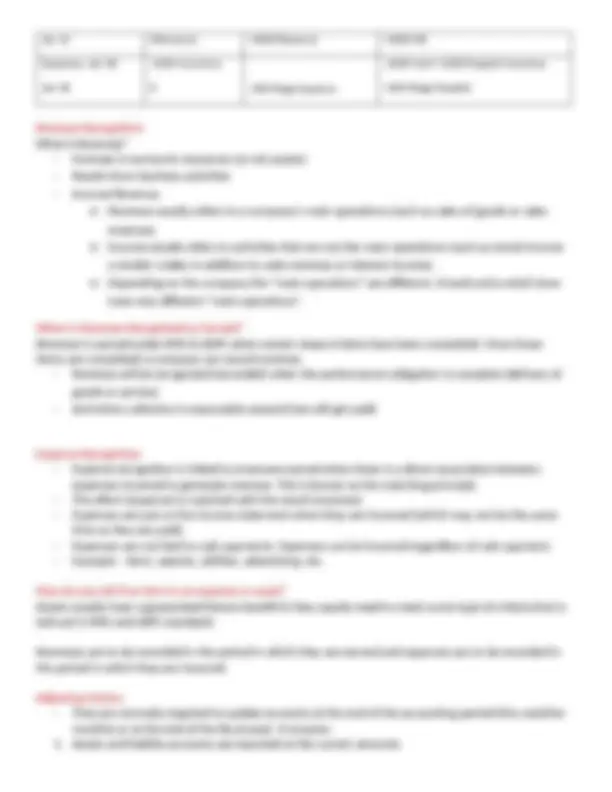
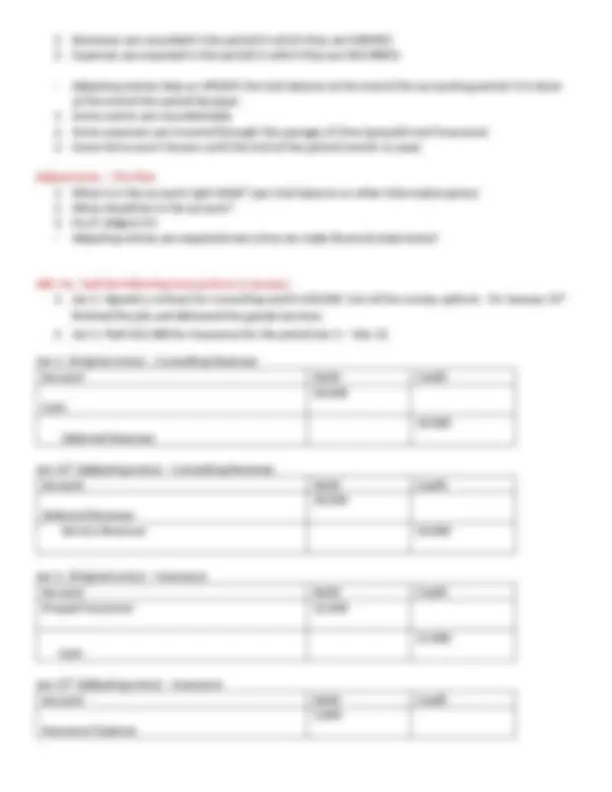
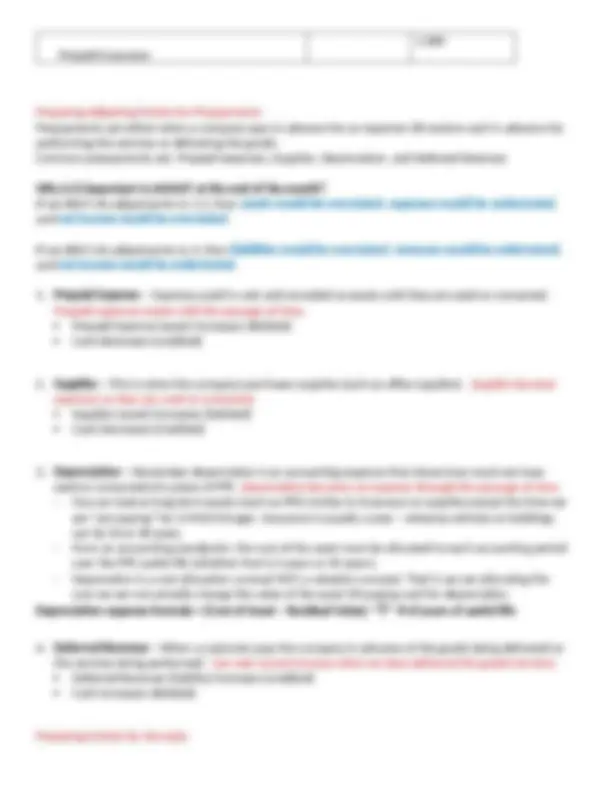
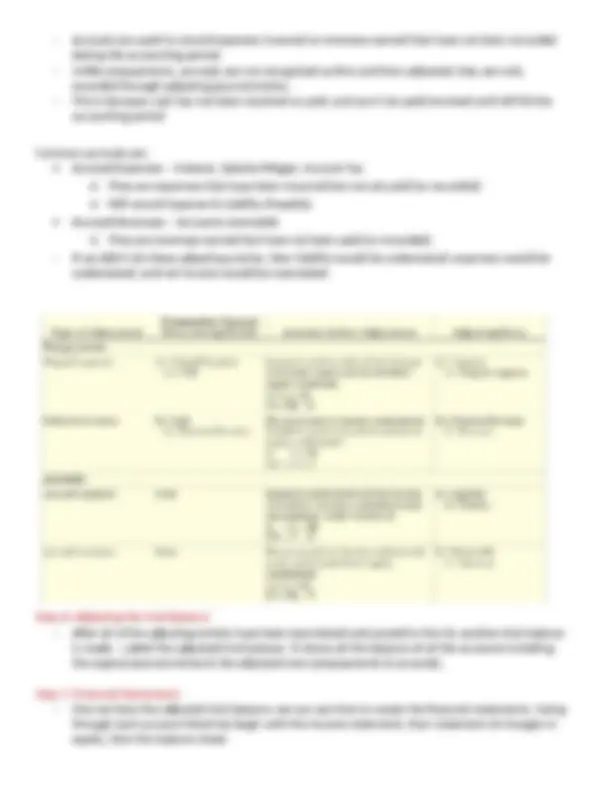
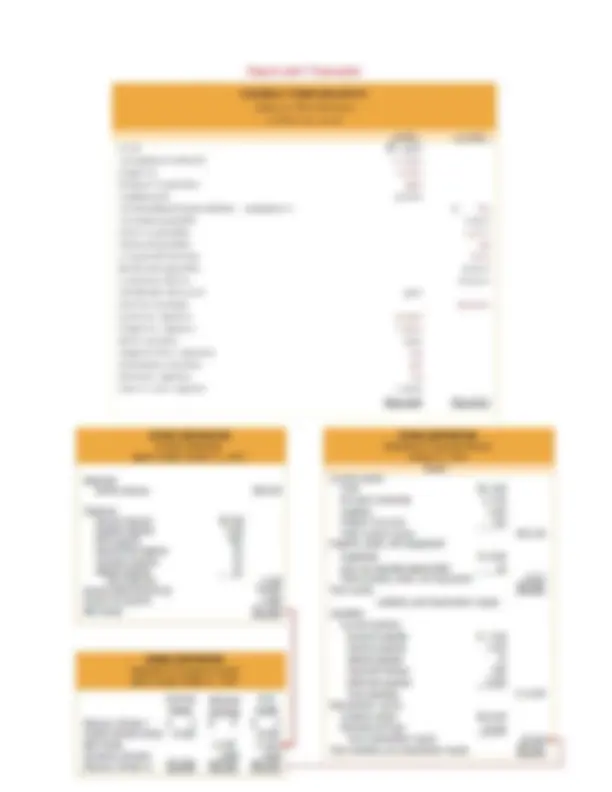
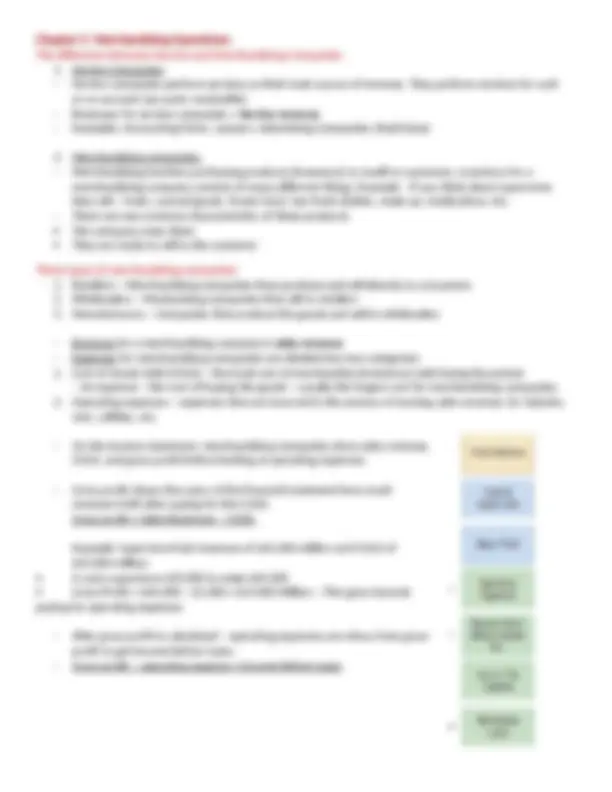
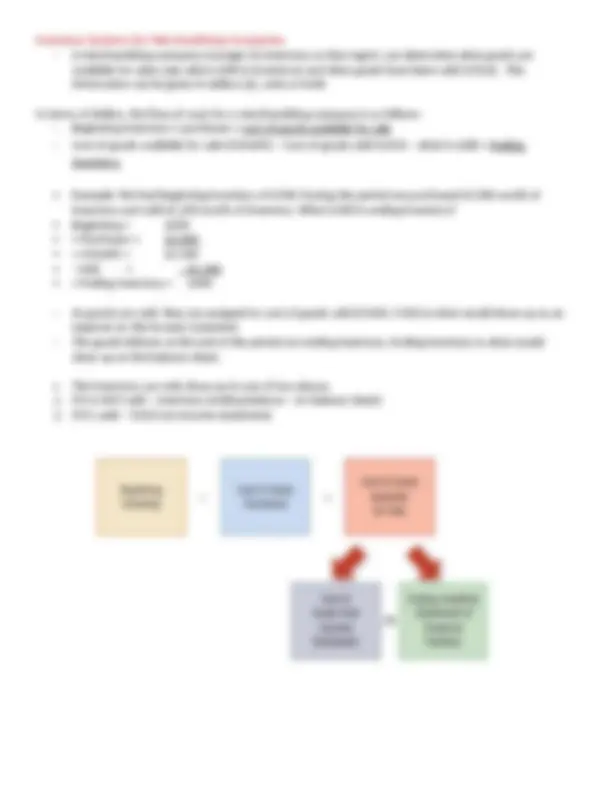
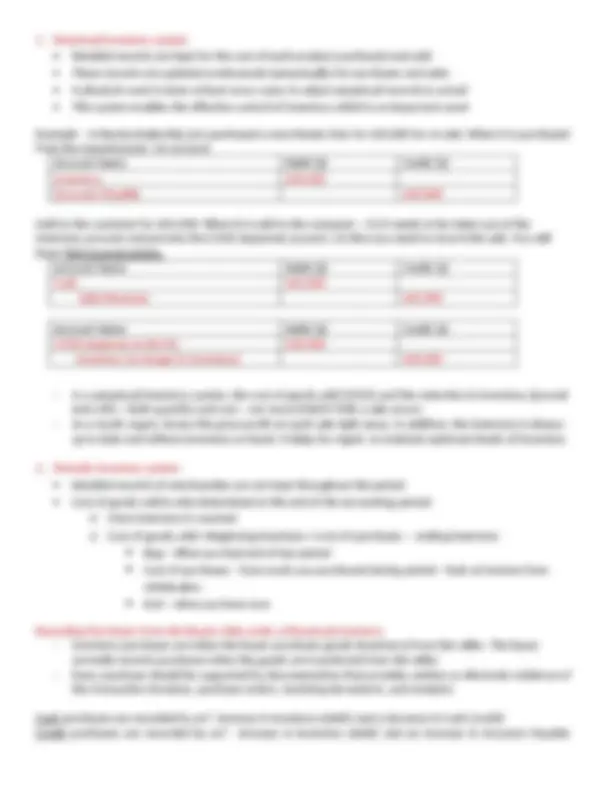
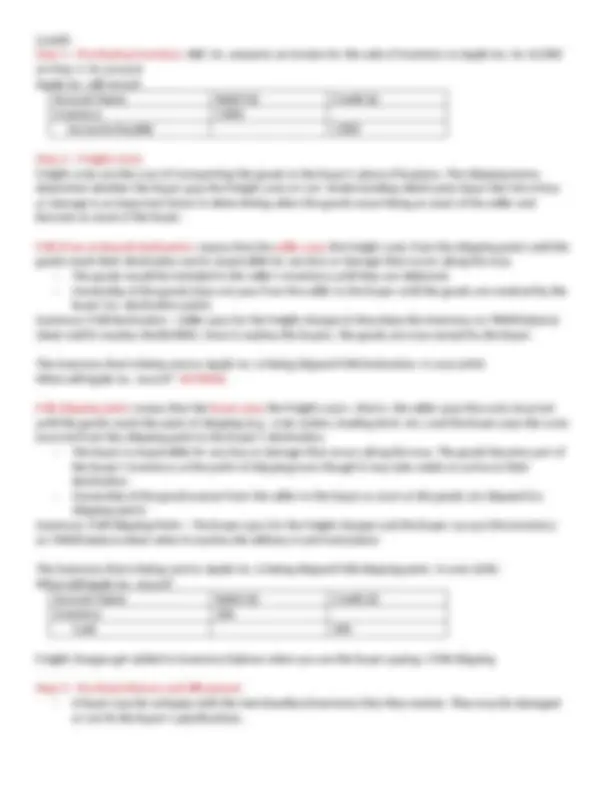
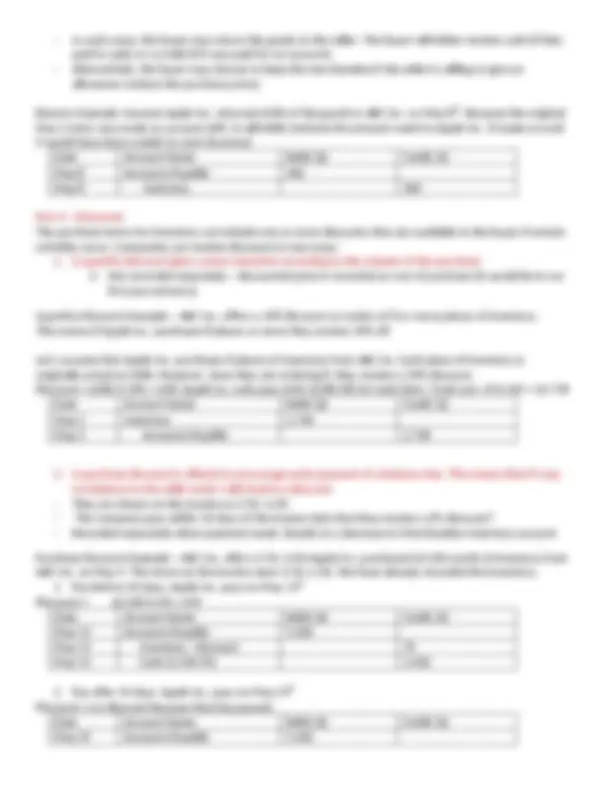
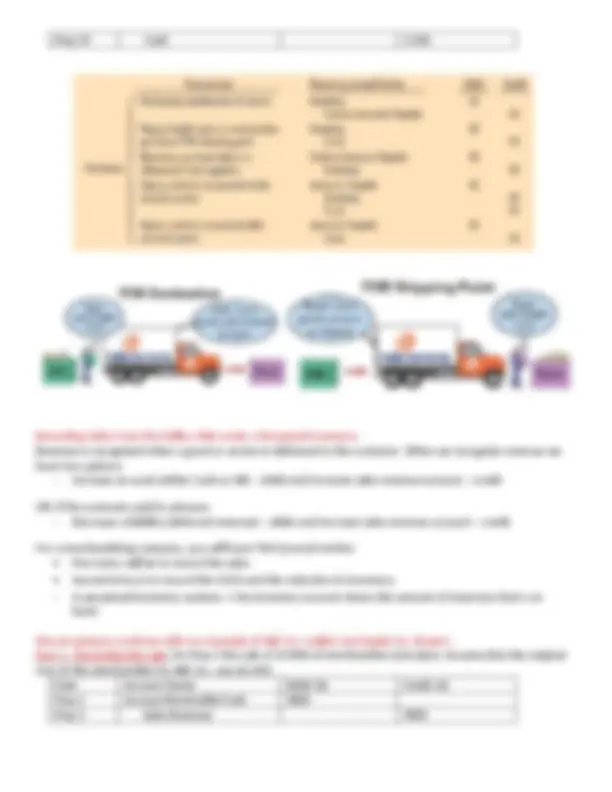
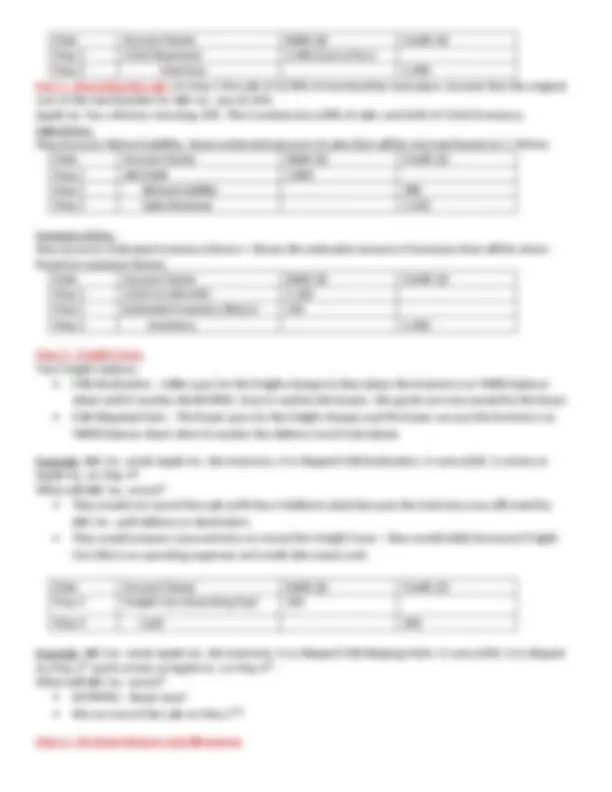
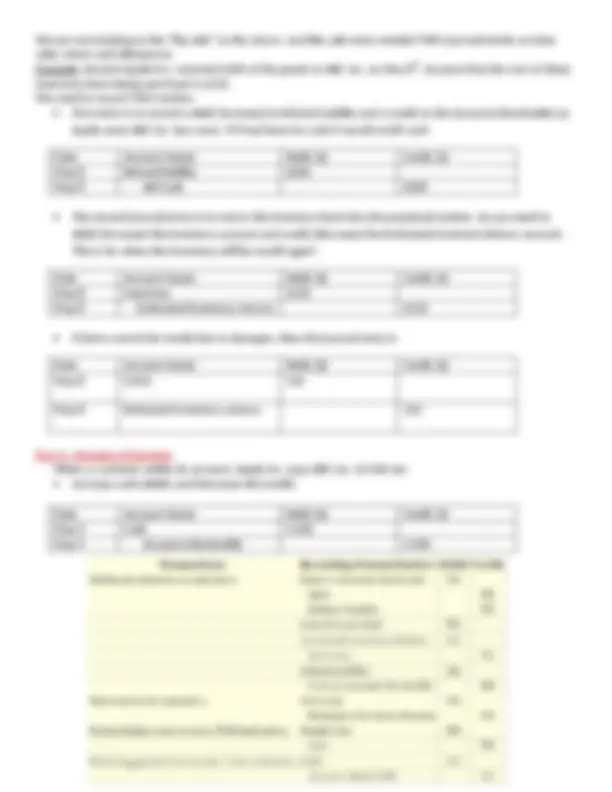
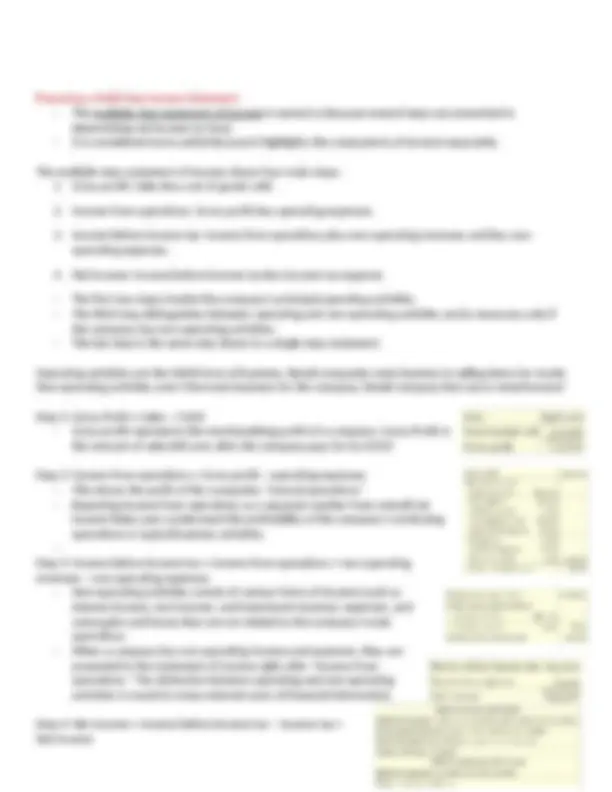
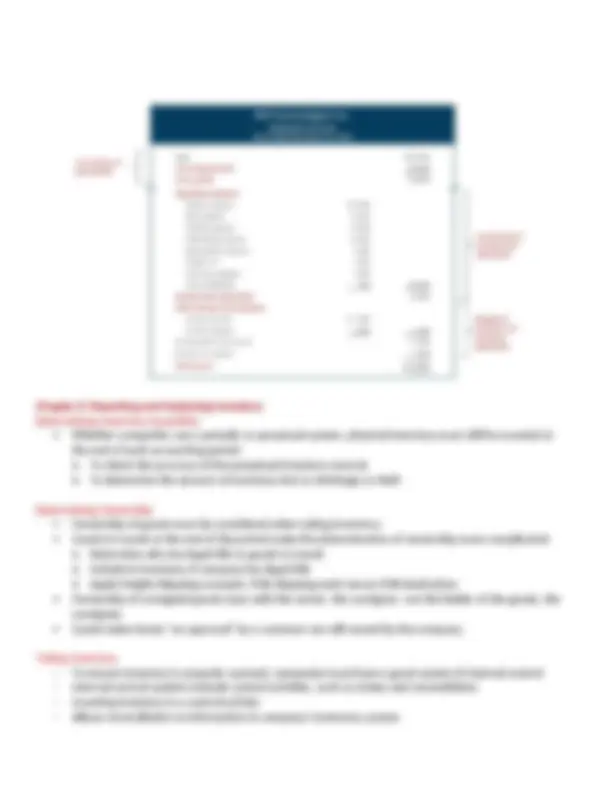
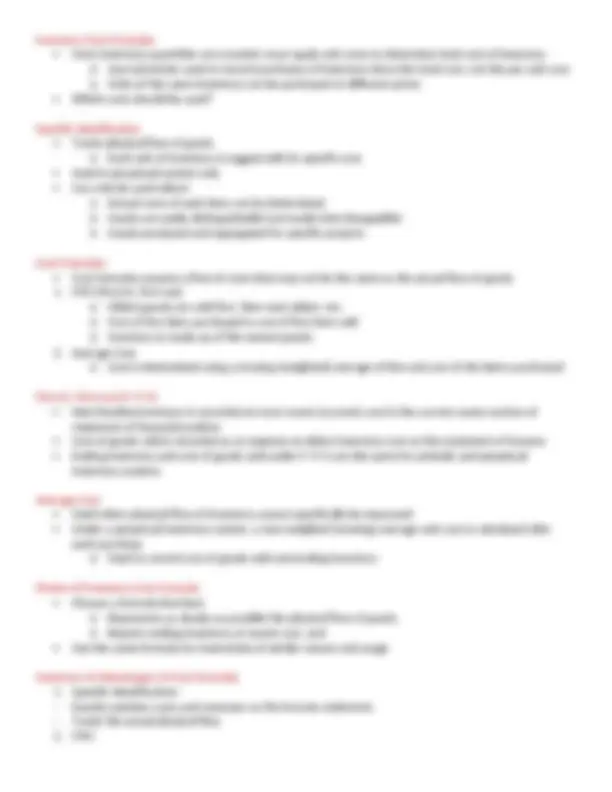
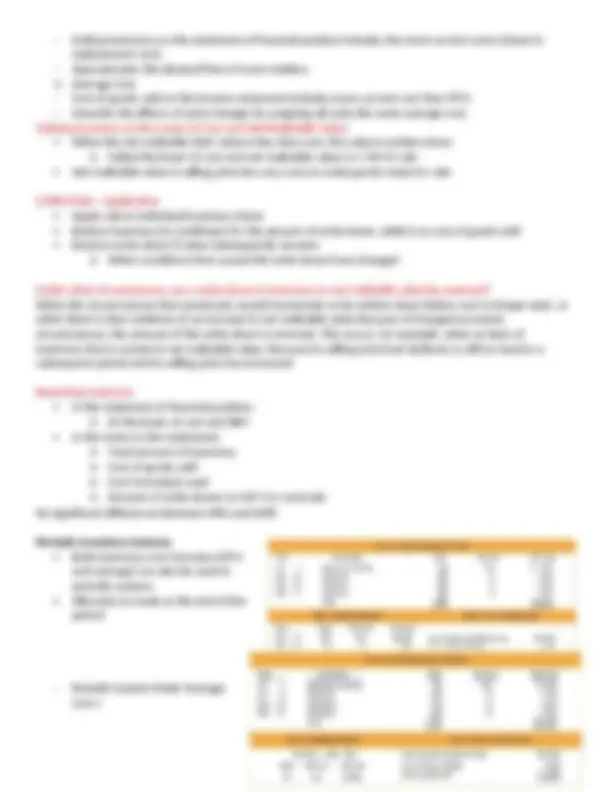
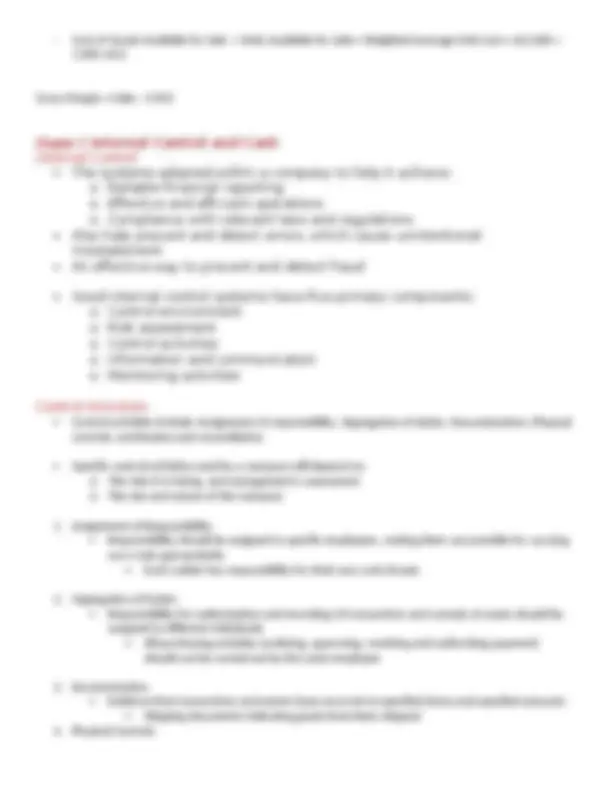
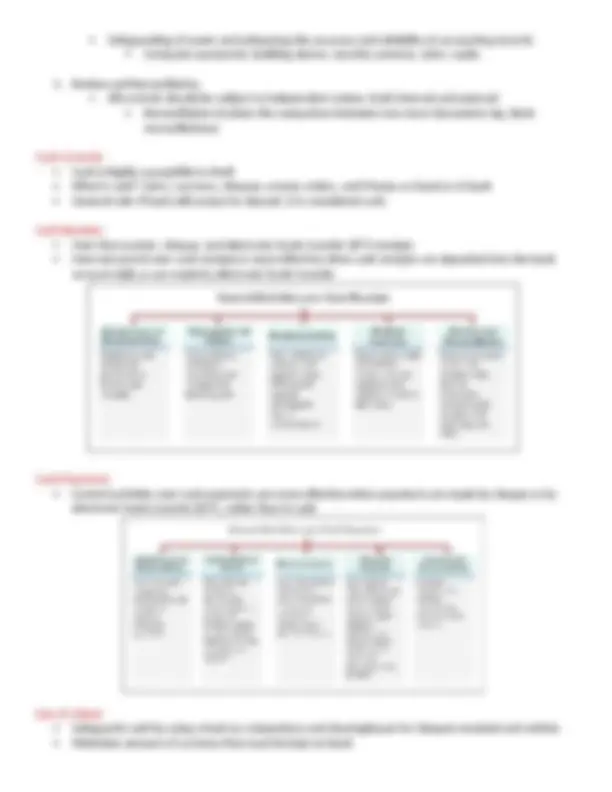
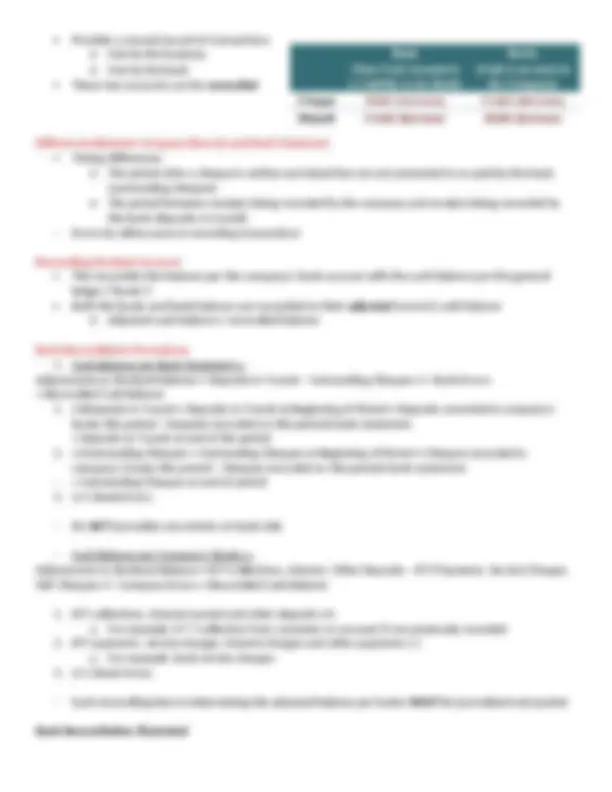
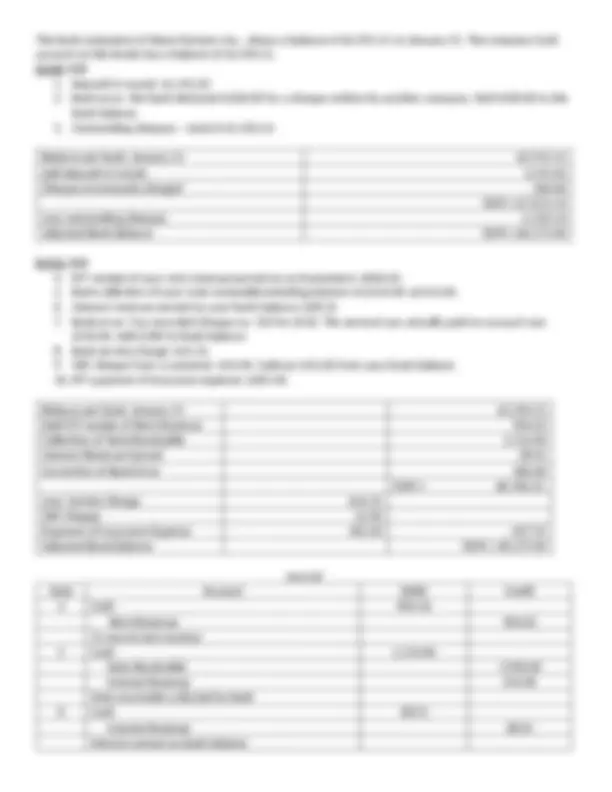
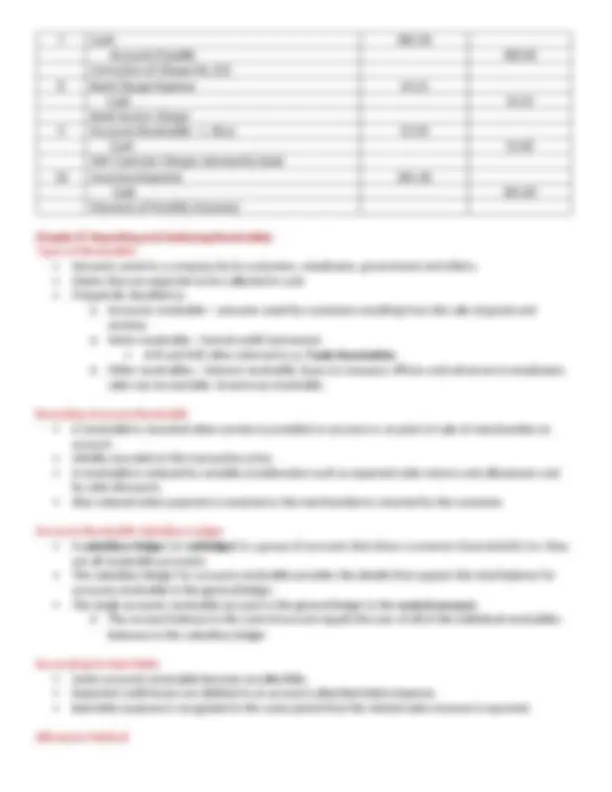
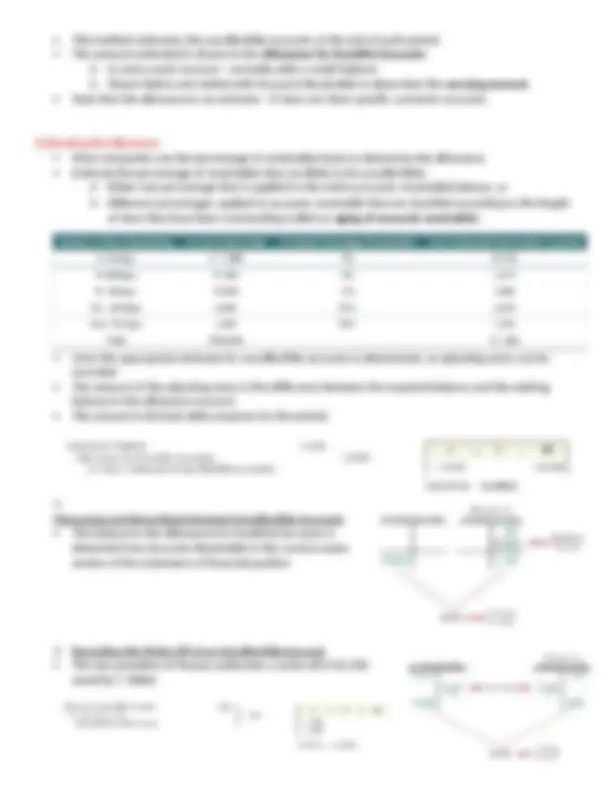
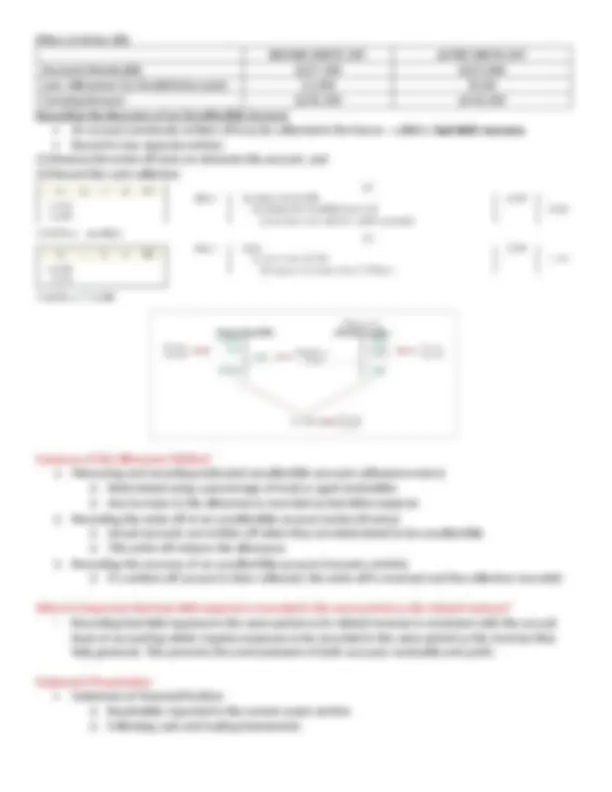
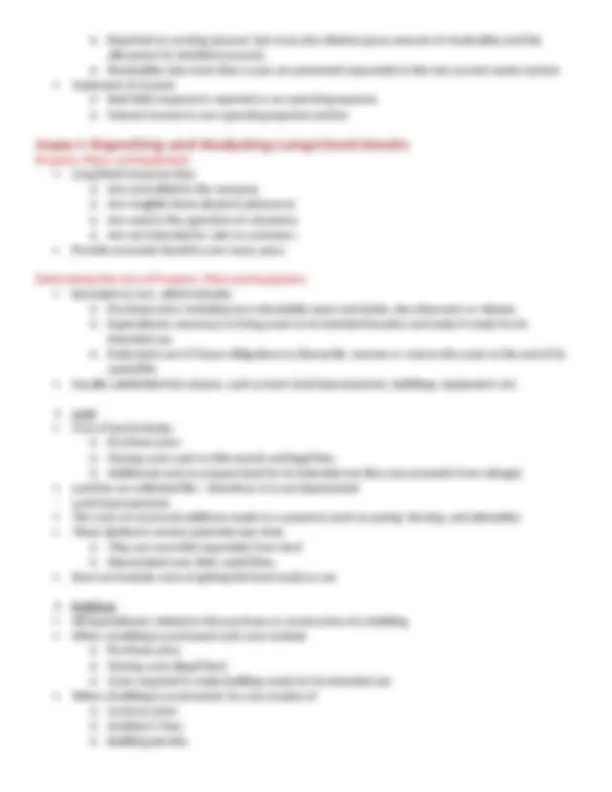
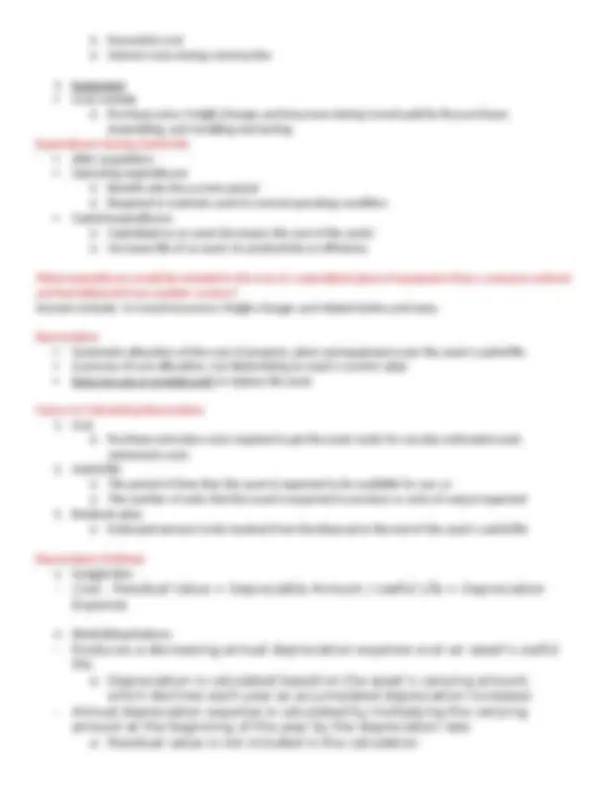
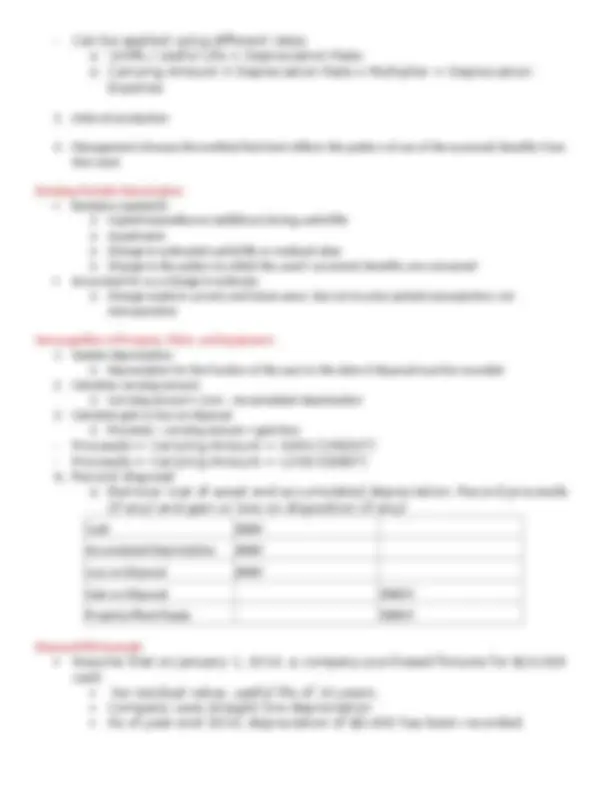
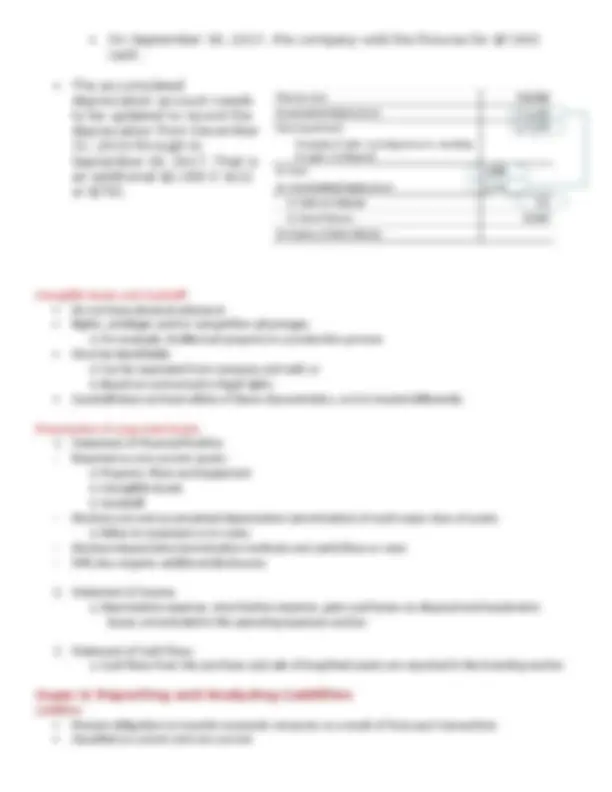
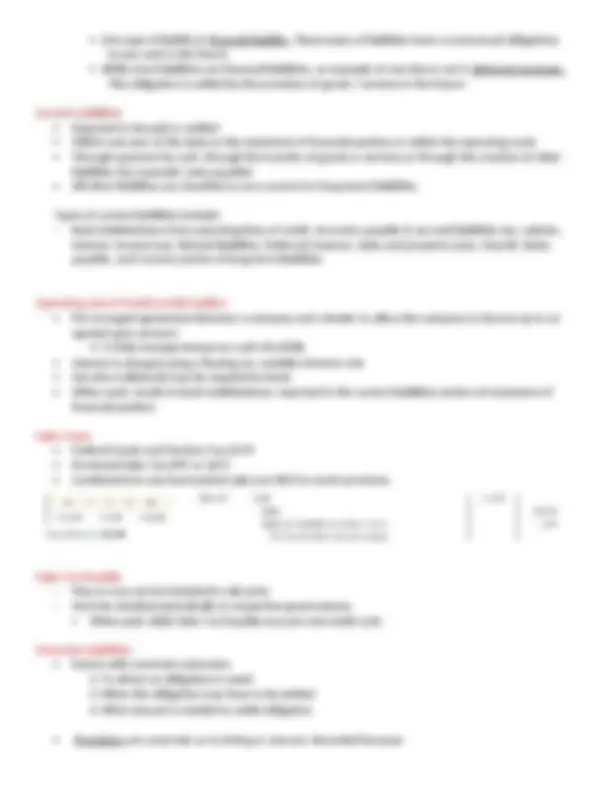
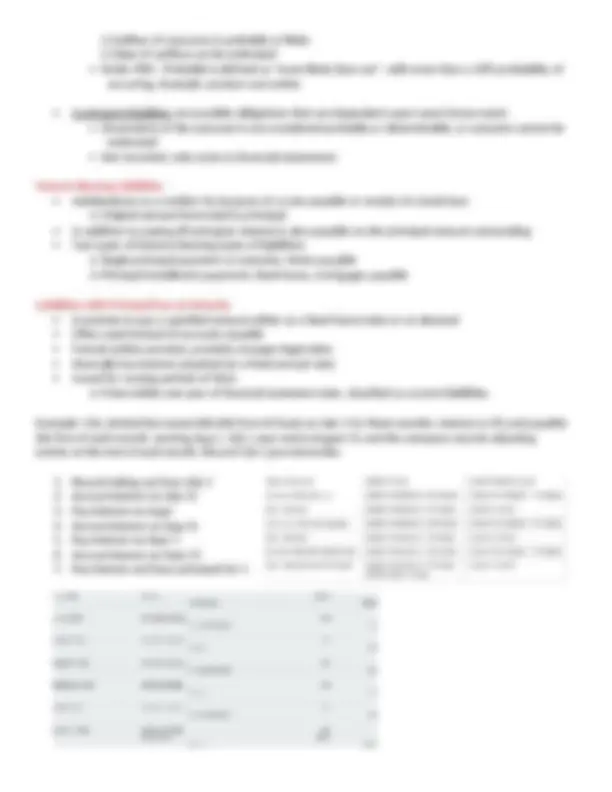
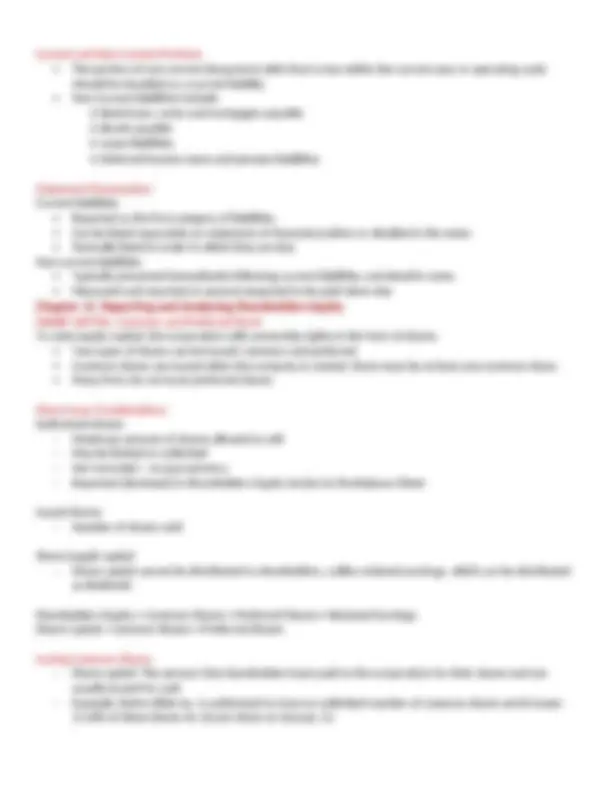
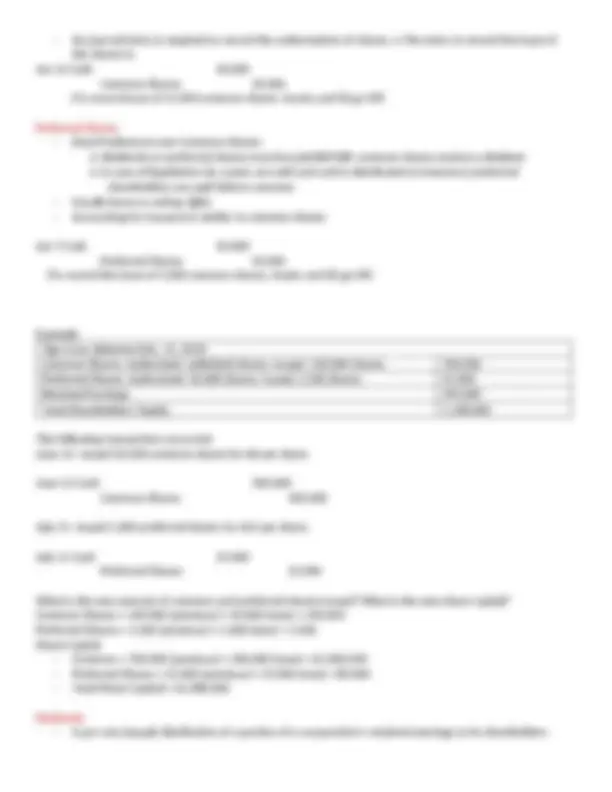
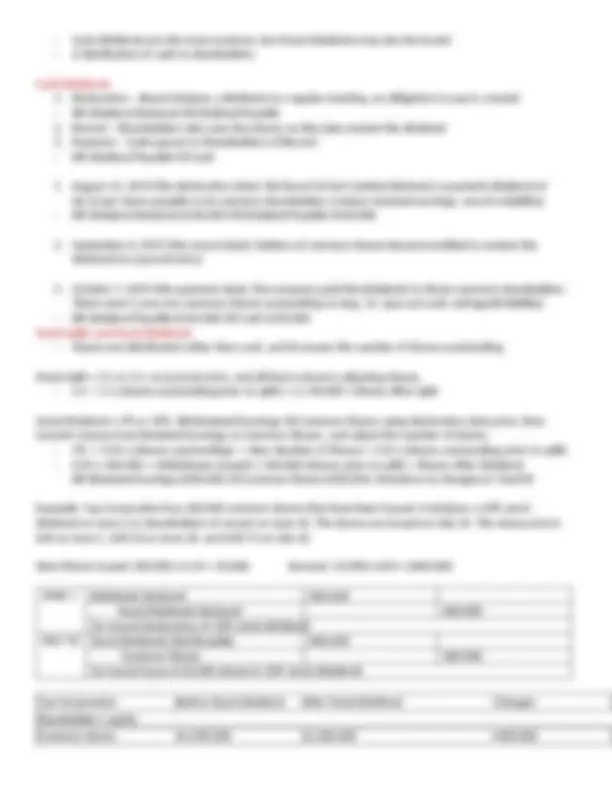
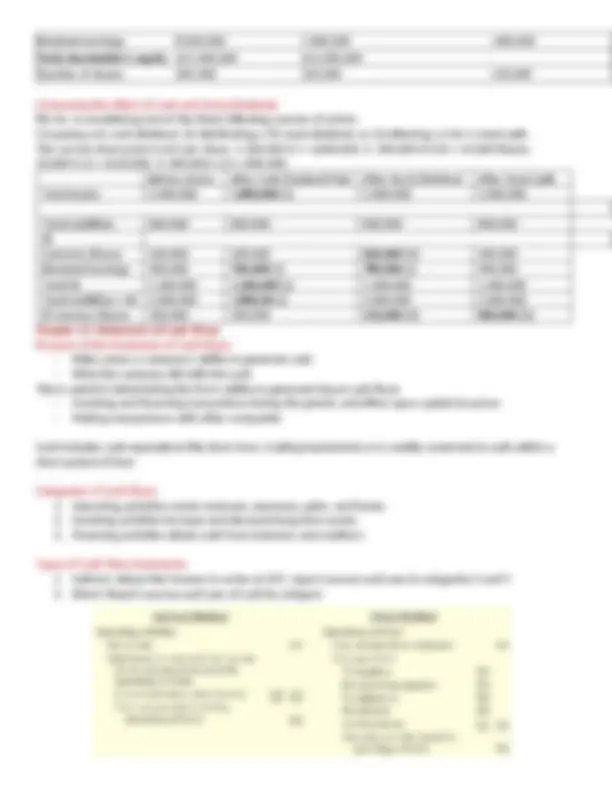
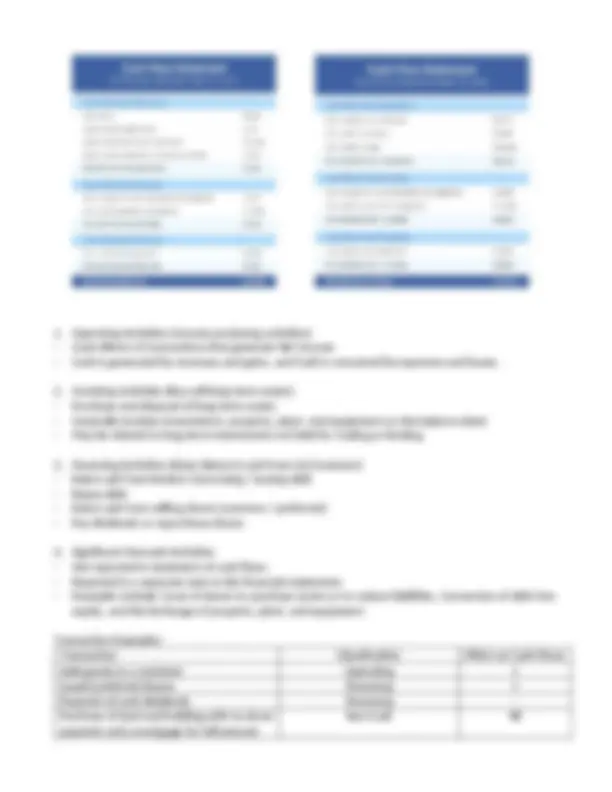

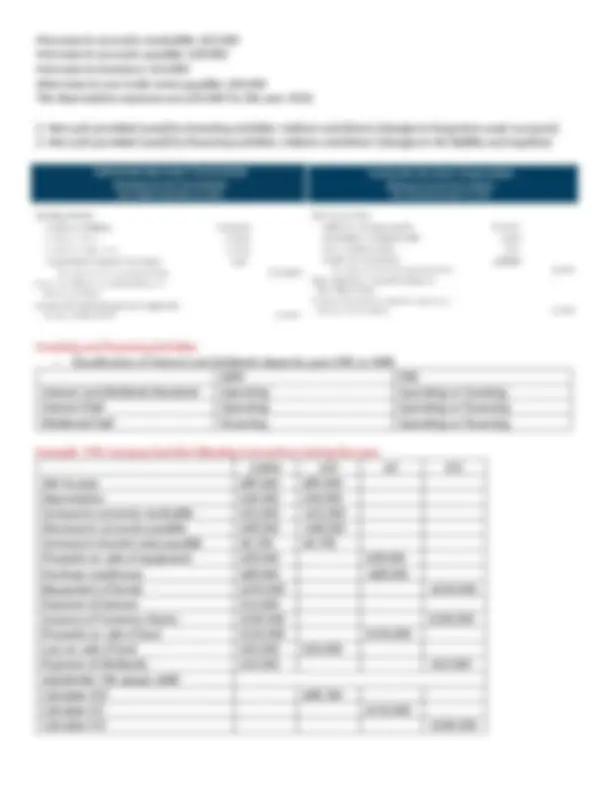
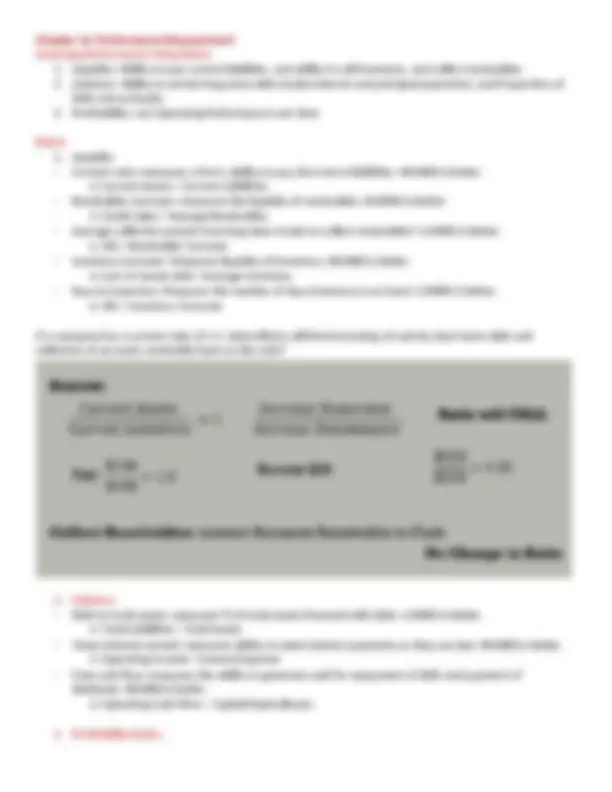
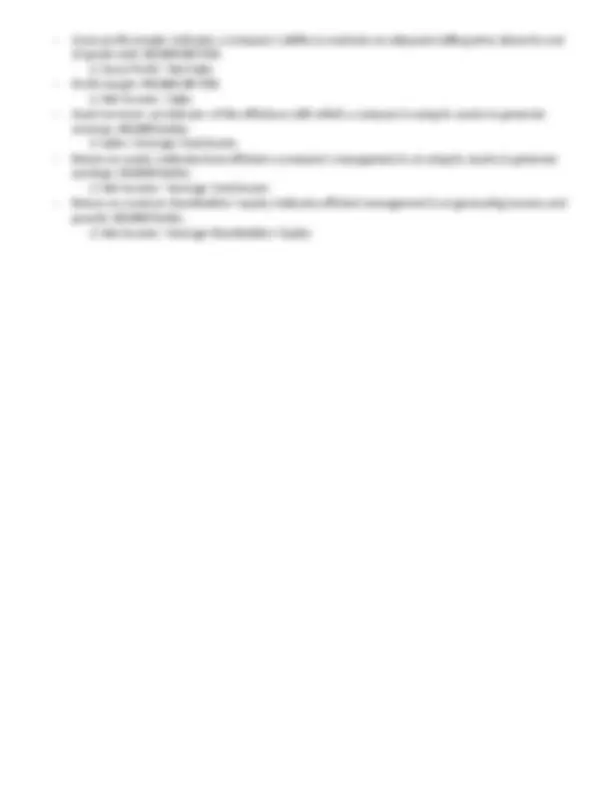


Study with the several resources on Docsity

Earn points by helping other students or get them with a premium plan


Prepare for your exams
Study with the several resources on Docsity

Earn points to download
Earn points by helping other students or get them with a premium plan
Community
Ask the community for help and clear up your study doubts
Discover the best universities in your country according to Docsity users
Free resources
Download our free guides on studying techniques, anxiety management strategies, and thesis advice from Docsity tutors
This review contains information from everything you learn during the semester. There are tables and images and graphs and lots of explanations. Using this to study for the Final Exam will guarantee a great grade!
Typology: Study notes
1 / 58

This page cannot be seen from the preview
Don't miss anything!



















































E2.4 : These items are taken from the financial statements of Summit Ltd. at December 31, 2021: Accounts payable Liability Balance Sheet $21, Accounts receivable Asset Balance Sheet 20, Accumulated depreciation—buildings Contra Asset Balance Sheet 50, Accumulated depreciation—equipment Contra Asset Balance Sheet 21, Buildings Non Current Asset Balance Sheet 133, Cash Asset Balance Sheet 24, Common shares Shareholders Equity Balance Sheet Stmt of Changes in Equity
Equipment Non Current Asset Balance Sheet 66, Income tax expense Expense Income Statement
Interest expense Expense Income Statement
Interest payable Liability Balance Sheet 2, Land Non Current Asset Balance Sheet 194, Long-term investments Non Current Asset Balance Sheet 28, Mortgage payable Non Current Liability Balance Sheet 104, Operating expenses Expense Income Statement
Prepaid insurance Asset Balance Sheet 1, Retained earnings, January 1 Shareholders Equity Balance Sheet Stmt of Changes in Equity
Service revenue Revenue Income Statement
Supplies Asset Balance Sheet 1,
Net Income = Revenue – Expenses = 183,040 – 158,680 – 4,550 – 5,200 = 14610 Retained Earnings = Beginning RE + Net Income – Dividends = 116,520 + 14,610 = 131,
We need to analyze each transaction to determine the following:
Example: Assume that ABC Company had the following transactions in January: Jan. 1: Received cash from customer, in advance of work done, $3,000. Work was not started until Feb. Jan. 15: Provided services for another customer worth $5,000 but will be paid in Feb. Jan. 30: Paid insurance for the next 12 months $1,200 (Feb 1 – Jan 31). Jan. 30: Wages expense for employee were incurred for Jan but won’t be paid until Feb Cash Basis Accrual Basis Income Statement Balance Sheet Revenue- Jan 1 +3000 Revenue 0 Revenue +3000 Cash +3000 Deferred Rev
Jan 15 0 Revenue +5000 Revenue +5000 AR Expenses- Jan 30 Jan 30 -1200 Insurance (^0) -500 Wage Expense -1200 Cash +1200 Prepaid Insurance +500 Wage Payable